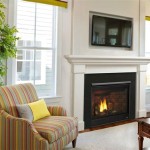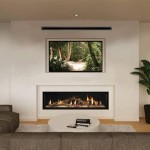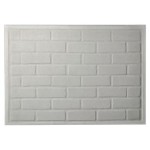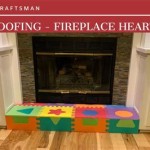Fire-Resistant Glass for Fireplaces: A Comprehensive Overview
Fireplaces offer warmth, ambiance, and aesthetic appeal to homes and buildings. However, they also present potential fire hazards. One critical component for mitigating these risks is the fireplace glass. Standard glass is unsuitable for withstanding the high temperatures generated by a fire, posing a safety concern. Fire-resistant glass, specifically designed for fireplace applications, is engineered to endure extreme heat and prevent the spread of flames, embers, and smoke. This article provides a detailed examination of fire-resistant glass for fireplaces, exploring its types, properties, installation considerations, and benefits.
The primary function of fire-resistant glass in a fireplace is to act as a barrier, containing the fire within the firebox. This containment is crucial for several reasons. Firstly, it prevents sparks and embers from escaping and potentially igniting flammable materials in the surrounding area, such as rugs, furniture, or curtains. Secondly, it reduces the risk of burns to individuals and pets who may inadvertently come into contact with the open flames. Thirdly, it contributes to better combustion efficiency by controlling airflow and maintaining a more consistent temperature within the firebox. Without fire-resistant glass, fireplaces would pose a significantly higher risk of causing property damage and personal injury.
Fire-resistant glass should not be confused with tempered glass, which is stronger than annealed glass but is not designed to withstand the sustained high temperatures of a fireplace. Tempered glass will shatter when exposed to extreme heat, posing a safety hazard. Fire-resistant glass is specifically formulated to maintain its structural integrity and transparency even under intense thermal stress.
Types of Fire-Resistant Glass for Fireplaces
Several types of fire-resistant glass are suitable for fireplace applications, each with its own set of characteristics and performance capabilities. The selection of the appropriate glass type depends on factors such as the size and design of the fireplace, the expected operating temperatures, and the specific fire safety requirements of the building code. The most common types include ceramic glass and borosilicate glass.
Ceramic Glass: Ceramic glass, also known as glass-ceramic, is a specialized type of glass that undergoes a controlled crystallization process during manufacturing. This process results in a material with exceptional thermal resistance and dimensional stability. Ceramic glass can withstand continuous operating temperatures of up to 1382°F (750°C) and short-term exposure to even higher temperatures. It exhibits minimal thermal expansion, meaning it does not significantly expand or contract when heated, reducing the risk of cracking or fracturing. Ceramic glass is highly resistant to thermal shock, the rapid temperature change that can cause ordinary glass to shatter. It is often the preferred choice for high-performance fireplaces and wood-burning stoves due to its robustness and durability. Examples of commercially available ceramic glass brands include Neoceram and Robax.
Borosilicate Glass: Borosilicate glass is another type of fire-resistant glass known for its excellent thermal shock resistance and chemical durability. It contains boron trioxide, which gives it a lower coefficient of thermal expansion compared to standard glass. This lower expansion rate makes it less susceptible to cracking when exposed to rapid temperature changes. Borosilicate glass can withstand continuous operating temperatures of up to 446°F (230°C), making it suitable for gas fireplaces and electric fireplaces where the temperatures are generally lower than those of wood-burning fireplaces. While borosilicate glass is less expensive than ceramic glass, it is not as heat-resistant and is therefore not appropriate for all fireplace applications. It is commonly used in laboratory glassware and other applications where thermal stability is critical.
The selection of the appropriate type hinges on the specific heat output of the fireplace and the desired level of thermal resistance. Consulting with a fireplace specialist is advisable to ensure the correct glass type is chosen for safety and performance.
Properties and Performance Characteristics
Fire-resistant glass exhibits a range of properties that make it suitable for fireplace applications. These properties are rigorously tested to ensure the glass meets industry standards and provides adequate fire protection. Key performance characteristics include thermal resistance, thermal shock resistance, impact resistance, and optical clarity.
Thermal Resistance: Thermal resistance refers to the ability of the glass to withstand high temperatures without undergoing significant deformation or failure. As previously noted, ceramic glass offers the highest thermal resistance, followed by borosilicate glass. The specific thermal resistance rating of the glass is typically provided by the manufacturer and should be carefully considered when selecting glass for a fireplace. The glass should be able to withstand temperatures that are significantly higher than the typical operating temperatures of the fireplace to account for potential spikes in heat output.
Thermal Shock Resistance: Thermal shock resistance is the ability of the glass to withstand rapid temperature changes without cracking or shattering. This is particularly important in fireplaces, where the glass may be exposed to sudden temperature fluctuations when the fire is started or when cold air enters the firebox. Ceramic glass and borosilicate glass both exhibit excellent thermal shock resistance, but ceramic glass generally performs better in extreme conditions. The thermal shock resistance of the glass is influenced by its composition, thickness, and manufacturing process.
Impact Resistance: Impact resistance is the ability of the glass to withstand impacts from objects without breaking. While fire-resistant glass is not typically subjected to high-impact forces, it is still important to consider its impact resistance, especially in homes with children or pets. Tempered glass offers higher impact resistance than standard glass, but it is not suitable for fireplace applications due to its poor thermal resistance. Fire-resistant glass is typically designed to withstand moderate impacts without shattering, providing an additional layer of safety.
Optical Clarity: Optical clarity refers to the ability of the glass to transmit light without distortion. It is essential that fireplace glass offers good optical clarity so that the fire can be viewed clearly and safely. Ceramic glass and borosilicate glass both offer excellent optical clarity, allowing for an unobstructed view of the flames. Some types of fire-resistant glass may have a slight tint or coating to reduce glare or improve thermal performance, but these should not significantly impair the view of the fire.
These properties collectively ensure the glass effectively contains the fire while providing a clear and safe viewing experience.
Installation and Maintenance Considerations
Proper installation and maintenance are crucial for ensuring the long-term performance and safety of fire-resistant glass in a fireplace. Incorrect installation can compromise the integrity of the glass and create a fire hazard. Regular maintenance, including cleaning and inspection, can help to prolong the lifespan of the glass and prevent potential problems.
Installation Procedures: Fire-resistant glass should be installed by a qualified professional who is familiar with fireplace construction and safety standards. The installation process typically involves removing the old glass (if applicable), cleaning the frame, and carefully installing the new glass using appropriate fasteners and sealing materials. The glass should be properly aligned and secured to prevent air leaks or movement. It is essential to use only the fasteners and sealing materials recommended by the glass manufacturer to ensure compatibility and prevent damage to the glass. The glass should be installed with adequate clearance around the edges to allow for thermal expansion.
Cleaning and Maintenance: Fire-resistant glass should be cleaned regularly to remove soot, ash, and other deposits that can accumulate on the surface. Use a specialized fireplace glass cleaner and a soft cloth or sponge to avoid scratching the glass. Never use abrasive cleaners or scouring pads, as these can damage the surface and reduce its optical clarity. Avoid cleaning the glass when it is hot, as this can cause it to crack. Allow the glass to cool completely before cleaning. Inspect the glass regularly for cracks, chips, or other damage. If any damage is detected, the glass should be replaced immediately by a qualified professional.
Safety Precautions: Always wear gloves and eye protection when handling fire-resistant glass to prevent cuts or injuries. Dispose of broken glass properly to avoid accidents. Never operate a fireplace with damaged or missing glass. Keep flammable materials away from the fireplace opening. Regularly inspect the fireplace and chimney for any signs of damage or blockage. Schedule annual professional inspections to ensure the fireplace is operating safely and efficiently.
By adhering to proper installation procedures and maintenance practices, homeowners can ensure that their fireplace glass provides years of safe and reliable performance. Neglecting these aspects can lead to compromised safety and potentially hazardous situations.

Neoceram Heat Resistant Glass Ceramic Hearth Fireplace

Ceramic Heat Proof Fireplace Glass Panel Resistant For Fire Rated Stove Door Buy On

Buy Custom Cut Fire Rated Glass For Doors Windows And Walls

For Reliable Fire Protection Silica From Evonik Glass Industries

Neoceram Heat Resistant Glass Ceramic Hearth Fireplace

Heat Resistant Heatproof Glass Cut To Size Me And My

Fire Resistant Glass Vitroszlif

1 0 Hours Clear Tempered Fireproof Fire Rated Resistant Glass China Made In Com

Buy Custom Cut Fire Rated Glass For Doors Windows And Walls

Stove Glass Buy Next Day Delivery Suitable For All Stoves








